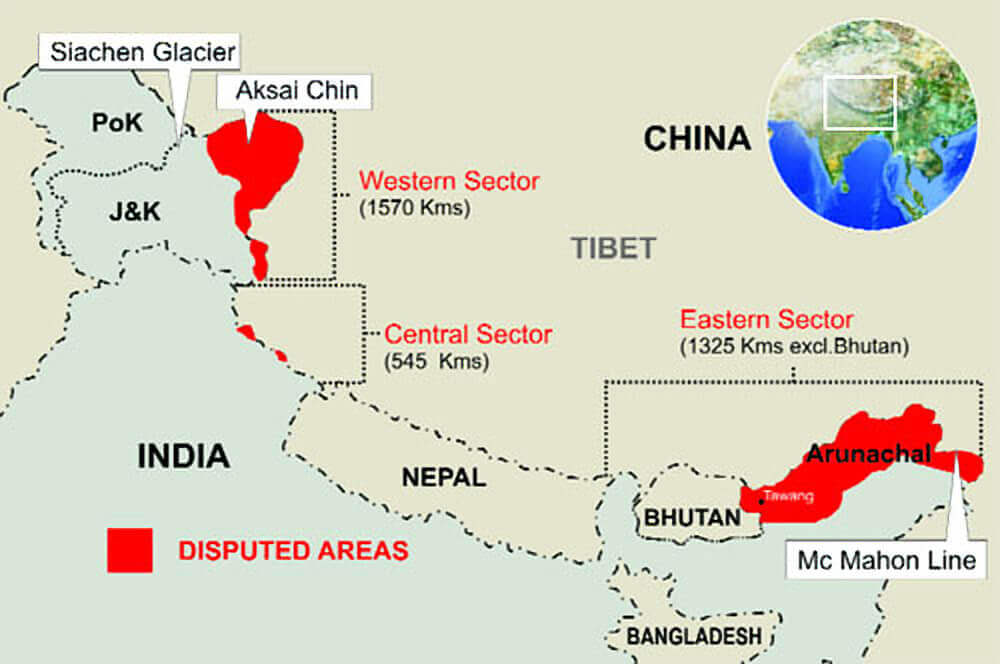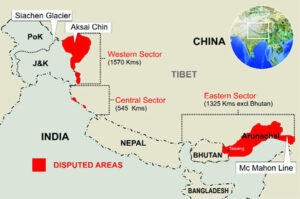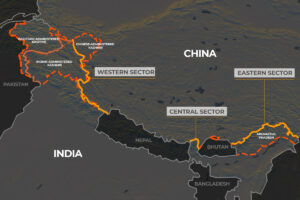
India China border agreement
India-China Agreement on Border Patrolling Issues
In a significant development in international diplomacy, India and China have reached an agreement concerning the patrolling arrangements along the Line of Actual Control (LAC). The agreement follows weeks of negotiations between officials from both countries, aiming to resolve longstanding border tensions. This arrangement is expected to pave the way for disengagement along the border areas, fostering stability in the region.

Background of the India-China Border Talks
The India China border agreement was announced by Foreign Secretary Vikram Misri, who highlighted the progress achieved through the recent diplomatic discussions. He mentioned that officials from both nations have been engaged in talks over the past few weeks to address unresolved issues. The discussions specifically focused on the Depsang and Demchok regions, which have been points of contention between the two countries. The progress made through these negotiations represents a step forward in easing tensions along the LAC, a region that has seen increased military presence since 2020.
Key Highlights of the Agreement
The India China border agreement focuses on the establishment of new patrolling arrangements along the LAC. This development aims to reduce the likelihood of future conflicts and promote stability in the region. According to Foreign Secretary Misri, the agreement marks a significant milestone in the ongoing efforts to resolve the border issues that have persisted since the confrontation in 2020. He stated, “As a result of the discussions that have taken place over the last several weeks, an agreement has been arrived at on patrolling arrangements along the Line of Actual Control in the India-China border area, leading to disengagement and eventually a resolution of the issues that had arisen in these areas.”

The agreement is viewed as a step toward achieving a long-term solution to the challenges in Depsang and Demchok, where previous military build-ups had led to heightened tensions. The focus on disengagement is crucial for restoring normalcy in these sensitive areas, as both countries seek to de-escalate the situation through peaceful means.
Upcoming BRICS Summit and Diplomatic Engagements
The announcement of the India China border agreement comes just ahead of Prime Minister Narendra Modi’s visit to Kazan, Russia, where he is set to attend the BRICS Summit. This timing has sparked speculation about the possibility of a bilateral meeting between PM Modi and Chinese President Xi Jinping on the sidelines of the summit. While there has been no official confirmation of such a meeting, it is anticipated that the leaders may discuss further steps to consolidate the recent progress in border negotiations.
The BRICS Summit presents a critical platform for both countries to engage in dialogue and explore avenues for collaboration beyond the immediate border concerns. A potential meeting between the Indian and Chinese leaders could reinforce the diplomatic efforts made in recent weeks and contribute to a broader framework for peaceful coexistence along the LAC.
Challenges and Ongoing Disengagement Efforts
Despite the progress made, some challenges remain in achieving complete disengagement along the LAC. Last month, External Affairs Minister S. Jaishankar addressed these challenges during a discussion at the Geneva Centre for Security Policy. He mentioned that approximately 75% of the “disengagement problems” with China have been resolved, but certain issues, such as the militarization of the border regions, continue to pose difficulties. Jaishankar emphasized, “We made some progress. I would say roughly you can say about 75% of the disengagement problems are sorted out. We still have some things to do.”
The ongoing negotiations between India and China reflect a shared commitment to addressing these challenges through dialogue rather than confrontation. The India China border agreement serves as a framework for further discussions aimed at achieving a full resolution of the remaining issues. Both nations recognize the importance of maintaining stability along the LAC, especially given the strategic significance of the region for their broader geopolitical interests.
Significance of the Agreement for Regional Stability
The India China border agreement holds considerable importance not only for the two countries but also for regional stability in South Asia. The LAC has been a longstanding flashpoint in the India-China relationship, and the recent agreement signals a shift towards a more cooperative approach in managing border tensions. The focus on patrolling arrangements and disengagement is expected to reduce the risk of future clashes, contributing to a more stable environment along the border.
The resolution of issues in areas like Depsang and Demchok could serve as a blueprint for addressing other points of friction along the LAC. By prioritizing dialogue and mutual understanding, India and China are taking steps toward building a more stable and secure border environment. This development is particularly significant in the context of broader geopolitical dynamics, where maintaining peaceful relations between the two largest Asian economies is crucial for the region’s security and prosperity.
Outlook for Future India-China Relations
The India China border agreement marks a positive step in the evolving relationship between the two countries, emphasizing the potential for dialogue and diplomacy in resolving disputes. While challenges remain, the progress achieved through the recent talks demonstrates a willingness on both sides to address differences constructively. As India and China continue to engage at multiple levels, the focus will remain on ensuring that the gains made through these discussions translate into lasting peace along the LAC.
The outcomes of the BRICS Summit, and any potential discussions between PM Modi and President Xi Jinping, will be closely watched for indications of the future direction of India-China relations. As the world’s attention turns to these diplomatic engagements, the hope is that both nations will continue to prioritize peace and stability, building on the foundation laid by the recent India China border agreement.
Disclaimer: This content is based on recent statements and developments regarding the India-China border agreement. Information is subject to change as diplomatic engagements continue, and readers should follow official sources for the latest updates.


